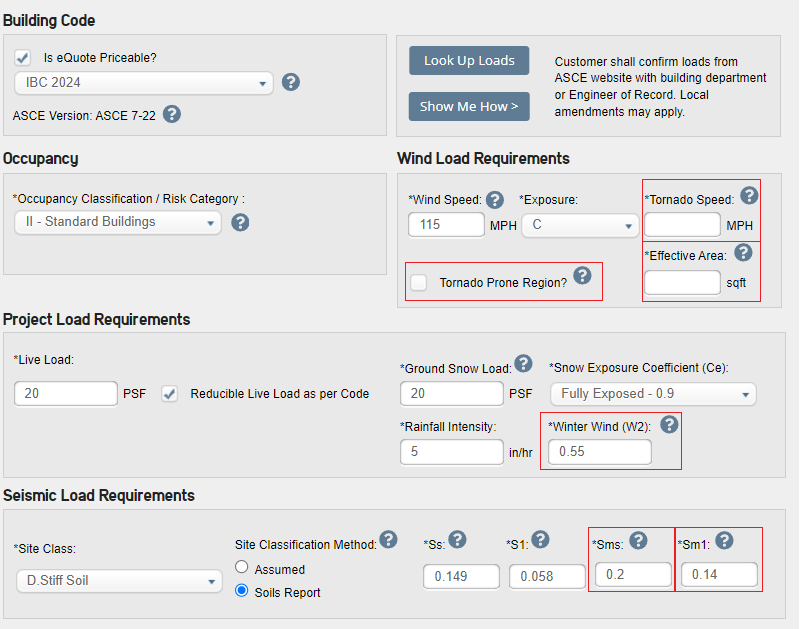« Back to November EagleMAIL 2024
November 2024
November 2024
eQuote Tips: Priceable IBC 2024 Building Code
eQuote now offers the ability to select and price with the IBC 2024 building code. We have added several new fields to the Code/Load Requirements screen to accommodate the new code.

Definitions and Using the ASCE Hazard Tool for ASCE 7-22
- Keep in mind that you are responsible for all load information and should always verify with the engineer of record.
- You can find each of these new inputs (other than plan area, of course) in the hazard tool at “ascehazardtool.org”.
- Tornado Prone Region: This field shows up only when the Risk Category is III or IV. According to IBC 2024, tornado-prone regions encompass much of the eastern and central United States. You will need to determine if your jobsite location is in a tornado prone region.
- The hazard tool will tell you if your location is not in a tornado prone region. Find your location and select “Tornado” and “View Results”.
- Tornado Speed (VT): This field shows up only when the Risk Category is III or IV. The tornado wind speed is a critical factor in the design of buildings and structures to ensure they can withstand the extreme forces generated by tornadoes.
- If there are tornado loads you can view the details. There you can look down the rows to find one that matches your Effective Plan Area. Then, use the first column and enter that tornado wind speed into eQuote.
- Effective Area: This field shows up only when the Risk Category is III or IV. The effective area is defined as the area of the smallest convex polygon that encloses the plan of the building or structure. This area is crucial for calculating the tornado wind pressures that the structure must withstand.
- Winter Wind (W2): This factor accounts for the additional wind pressure that can affect snow accumulation on structures during winter conditions. In essence, the Winter Wind Factor modifies the ground snow load by a certain percentage to account for the impact of wind on snow accumulation. This adjustment helps in designing structures that are more resilient to the combined forces of wind and snow during winter.
- To find the winter wind parameter, select “Snow” and “View Results”. Hit “Details” and enter the winter wind parameter into eQuote.
- Sms and Sm1: In IBC 2024, the Sms value (short-period spectral acceleration) is used alongside other seismic design parameters, such as the 1-second period factor (Sm1), to ensure that buildings are designed to resist seismic forces appropriately. These parameters are part of the seismic design criteria outlined in the ASCE 7-22 standard, which is referenced by IBC 2024.
- The new seismic values are under “Seismic” as expected. After viewing the result and drilling down to the details, you will find the Sms and Sm1 along with the Ss and S1. Enter these on the Code/Load screen.
